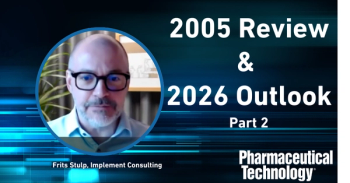
Pharmaceutical Technology Europe
- Pharmaceutical Technology Europe July/August 2025 Issue
- Volume 37
- Issue 5
EMA Encourages Use of New Approach Methodologies to Reduce Animal Testing
Key Takeaways
- EMA encourages NAMs to replace animal testing, aligning with 3Rs principles, and has published a concept paper on regulatory acceptance.
- EFPIA supports phasing out animal testing, emphasizing collaboration, funding, and regulatory updates for NAMs.
EMA is phasing out animal testing and is asking pharmaceutical companies to use new approach methodologies.
The European Medicines Agency (EMA) is encouraging the use of new approach methodologies (NAMs) as an alternative to animal testing in the assessment of safety and efficacy of new medicines during non-clinical development (1). In the European Union (plus Norway), 8.48 million uses of animals for scientific purposes occurred in 2022 (2). In most countries, the use of animals for some safety tests is required. For instance,
- Availability of a defined test methodology (protocol, endpoints)
- Description of the proposed NAM context of use (i.e., the circumstances in which the NAM is applied in the development and assessment of human or veterinary medicinal products)
- Establishment of the relevance within that particular context of use
- Demonstration of NAM reliability and robustness (5).
Phasing in of NAMs
NAMs will need to be phased in. EMA is working with NAM developers to facilitate regulatory acceptance of these methodologies through briefing meetings and discussions with its Scientific Advice Working Party. Companies can also apply for the Committee for Medical Products for Human Use qualification of NAMs and voluntarily submit data generated from NAMs to the EMA; however, these data can be excluded from the regulatory decision-making process (Figure 1).
The European Federation of Pharmaceutical Industries and Associations (EFPIA) endorses EMA's actions and believes it is feasible to phase out animal testing, “providing there is cross-sector collaboration, robust funding and incentives, global harmonization and streamlined regulatory acceptance of nan-animal methods” (6). In June 2025, EFPIA published pharma-specific recommendations regarding the phasing out of animal testing for chemical safety assessment. These include:
- Strengthen collaboration between industry, regulators, academia, and non-government organisations (NGOs) through targeted consortia and incentives that catalyse NAM development.
- Improve data sharing by creating safe harbour mechanisms, secure databases, and fee waivers for exploring novel methods.
- Update regulatory frameworks to recognise the “last resort” principle, incorporate flexible qualification pathways, and align the roadmap with ongoing legislative revisions.
- Institutionalise regular guideline reviews (e.g., every three years) to continuously phase out legacy animal tests and accelerate acceptance of new methods.
- Build public trust by raising awareness of cutting-edge, non-animal approaches that can yield superior, more human-relevant safety data (6).
NAM techniques
NAMs encompass a range of techniques, such as high-throughput screening, in vitro (cell- and tissue-based) assays, and in silico modelling, often utilizing artificial intelligence and machine learning. NAMs focus on identifying changes in biological function that occur before outward symptoms, allowing for a more mechanistic understanding of the biomolecular interactions along the pathway toward harm (7). For instance, adverse outcome pathways (AOPs) enable tiered testing at multiple biological levels, increasing the overall predictive power and providing more accurate evidence-based approaches for hazard and risk assessment (Figure 2). AOPs could potentially reduce the levels of drug attrition rates resulting from undesired effects later in product development (8–10).
Furthermore, some organoids, organ-on-a-chip (OOC) technologies, and multi-organ microphysiological systems can simulate native organ structure and function, providing a cost-effective and accurate model for pharmacokinetics, pharmacodynamics, and toxicity studies (11). OOCs allow the rapid screening of multiple drug development candidates on a single chip, improving regulatory safety assessments and reducing the number of animal-based screens (12). In addition, several in vitro cell biotransformation assays (CTAs) can assess carcinogenicity and exhibit good correlation with rodent bioassays. The CTAs can detect genotoxic and non-genotoxic carcinogens and provide a quick and more cost-effective alternative to in vivo carcinogen models (13). Large pharma companies, such as AstraZeneca, GSK, and Pfizer, have established partnerships with OOC and CTA companies to harness this technology in their preclinical drug development programmes (14–16).
The future implementation of NAMs
There is a paradigm shift toward a more mechanistically driven approach to toxicity testing for safety assessment. During the past decade, significant progress has been made in the development and evaluation of AOPs, OOCs, and in silico modelling technologies that enable risk-free biomedical testing and reduce the need for animal-based models (2). Stakeholders will need to work together to phase in NAMs and phase out animal testing (6). The regulators are keen to embrace new methodologies that replace, reduce, or refine the use of animals in research and encourage NAM developers to share their data and knowledge to facilitate the regulatory acceptance of these methodologies and ensure the NAMs are scientifically sound and useful in regulatory decision-making for the future (1).
References
- EMA.
Regulatory Acceptance of New Approach Methodologies: How to Interact with EMA . ema.europa.eu (accessed 1 July 2025). - NC3Rs.
How Many Animals Are Used in Research? nc3rs.org.uk (accessed July 2025). - EMA.
Directive 2010/63/EU of the European Parliament and of the Council of 22 September 2010 on the Protection of Animals Used for Scientific Purposes Text with EEA Relevance . EC.europa.eu.22 Sept. 2010. - EMA.
Concept Paper on the Revision of the Guideline on the Principles of Regulatory Acceptance of 3Rs (Replacement, Reduction, Refinement) Testing Approaches . EC.europa.eu.12. Oct. 2023. - EMA.
Guideline on the Principles of Regulatory Acceptance of 3Rs (Replacement, Reduction, Refinement) Testing Approaches. EC.europa.eu.24 Feb. 2017. - EFPIA.
EFPIA Recommendations on Phasing Out Animal Testing for Chemical Safety Assessments. efpia.eu. June 2025. - British Toxicology Society.
New Approach Methodologies (NAMs) . thebts.org. May 2024. - Vinken, V.
Adverse Outcome Pathway Networks as the Basis for the Development of New Approach Methodologies: Liver Toxicity as a Case Study. Current Opinion in Toxicology, 2024, 40, 100504, - Burden, N. et al.
Pathways-Based Approach Across the Biosciences–Toward Application in Practice . NC 3Rs Workshop. 28 Apr. 2016. - Burden, N. et al.
Adverse Outcome Pathways Can Drive Non-Animal Approaches for Safety Assessment . J Appl Toxicol. 2015 35(9):971-5. - Zhou, L. et al.
Organoids and Organs-on-Chips: Recent Advances, Applications in Drug Development, and Regulatory Challenges . Med (New York, N.Y.). 2025 6(4), 100667. - Yang, Z.; et al.
Liver-on-a-Chip: Considerations, Advances, and Beyond .Biomicrofluidics. 2022 16(6), 061502. - Creton, S.; et al.
Cell Transformation Assays for Prediction of Carcinogenic Potential: State of the Science and Future Research Needs., Mutagenesis, 2012 27 (1), 93–101. - GlobeNewswire.
Medera’s Novoheart Releases Latest Cardiac Screening Innovation, CTScreen v1.5 to Advance High-Throughput, Automated Human-Based Drug Testing . 10 Dec. 2024. - GEN. Engineered Heart-on-a-Chip Replicates Drug Responses Found in Adult Humans. 8 Aug. 2019.
- Pfizer.
Scientists Mimic Human Organs on Microscopic ‘Chips’ That Enable Drug Testing . Pfizer.com (accessed July 2025).
About the author
Cheryl Barton, PhD, is founder and director of PharmaVision, Pharmavision.co.uk.
Newsletter
Get the essential updates shaping the future of pharma manufacturing and compliance—subscribe today to Pharmaceutical Technology and never miss a breakthrough.




